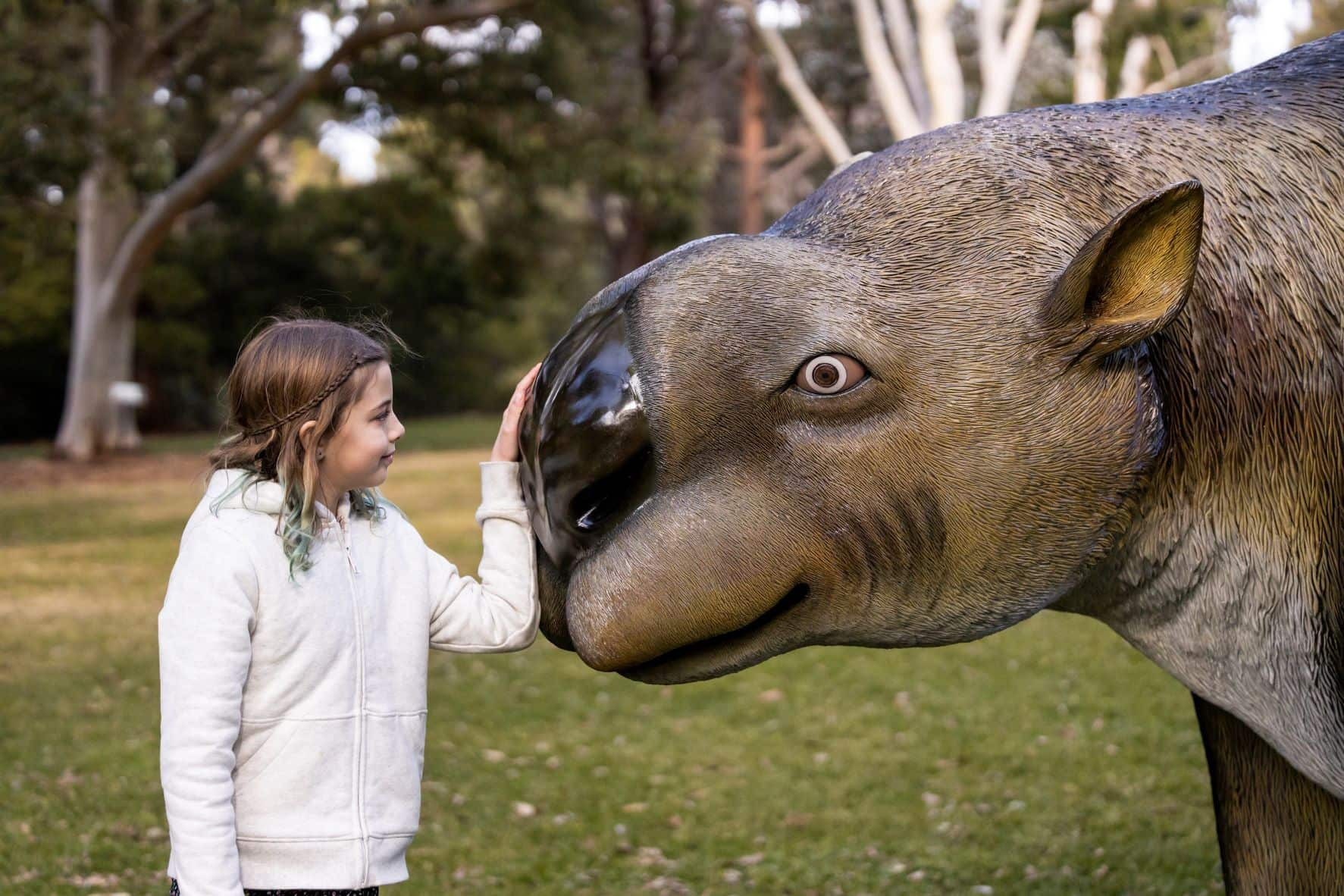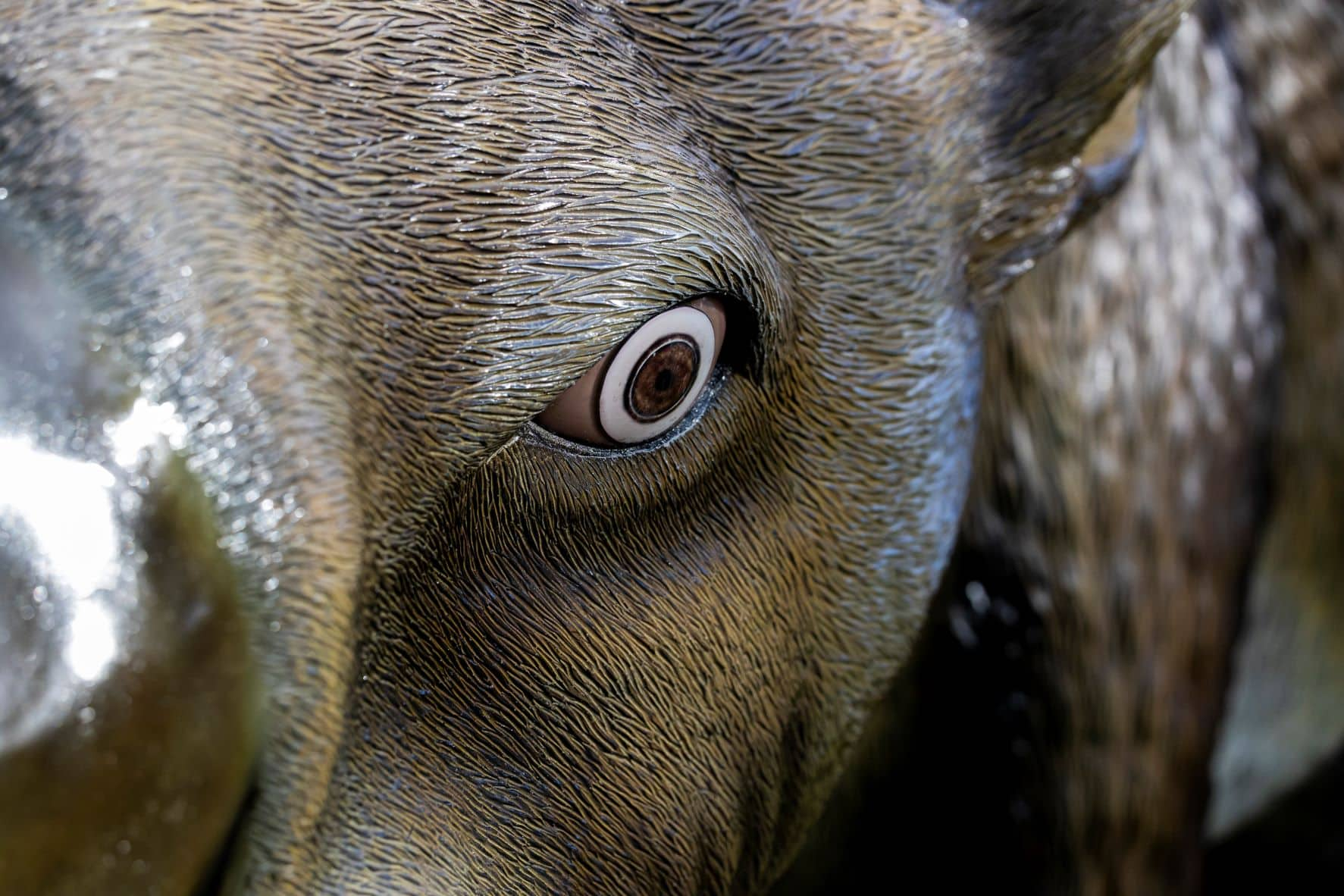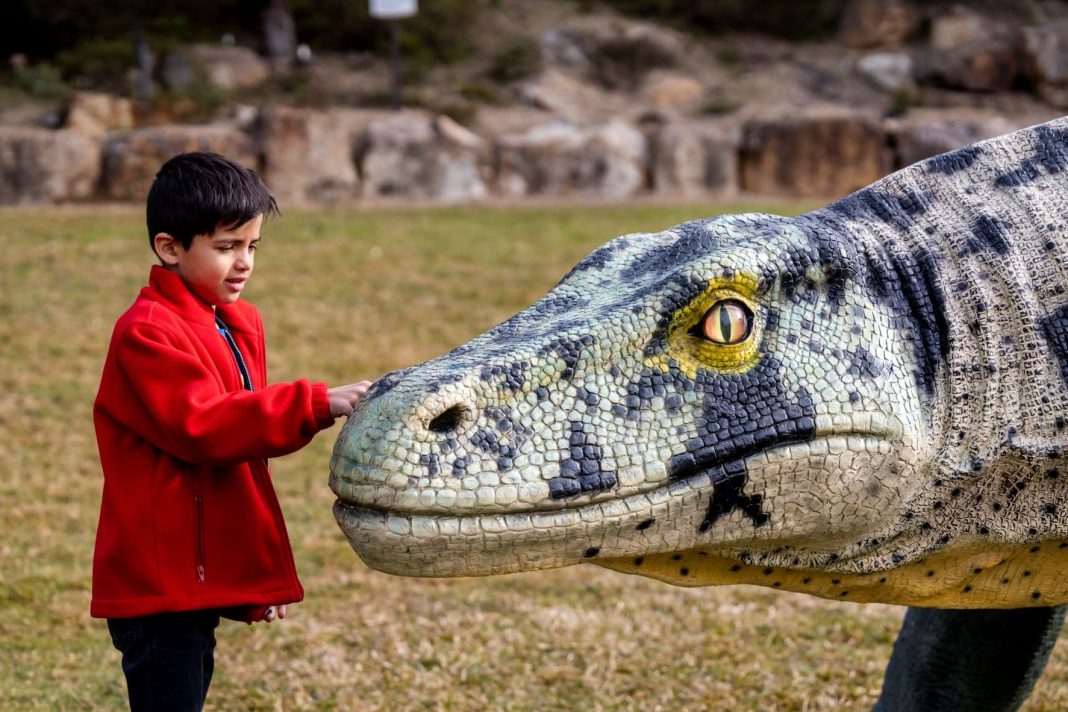The huge creatures that once roamed our country have returned to the Australian National Botanic Gardens for the month of July in MEGAfauna: myths and legends!
After the success of last year’s MEGAfauna: once there were giants! the Gardens decided to bring some of the creatures back from the Pleistocene period, this time with a new twist, exploring the connection between the giant creatures and those in myths and legends.
Head to the Visitor Centre and grab your megafauna brochure before beginning your journey at the giant python, Wonambi Naracoortensis, named after the Rainbow serpent from the Aboriginal Dreamtime. The brochure includes a map via which Wonambi will lead you on a trail back through time, discovering creatures that lived not so long ago.
The Gardens’ event manager Megan Donaldson explained how the previous megafauna installation reintroduced these huge creatures whereas this year’s event explores fact and fiction, given many of the animals we know existed seem to be quite similar to those featured in tales like Dreamtime stories.
“We are talking about the myths and legends that surround the creatures. The stories, the habitats that they existed in, changes in the environments, paleontology versus Dreamtime stories, the convergence that comes together.”
Megan says that throughout the trail, guests are invited to make up their own mind whether they think the creatures on display are the same as those in the tales, noting how these stories were passed down for a reason. She chooses to believe that Bunyips existed.
One of the creatures to be featured is thought to have been the original drop bear; Thylacoleo Carnifex was a jaguar-like predator that is likely to have climbed trees to ambush its prey. It had enormous teeth and retractable thumb claws; its bite force was more powerful than any mammal ever to live – but don’t worry; you don’t need to slather yourself in vegemite to avoid this one, he is chained in place.
Emus and cassowaries are megafauna that still roam the planet today. Amongst the mist in the Garden’s rainforest, explorers will be able to spot a cassowary busy rustling leaves. For the first two weeks, a special guest will be hanging up in the trees there, too; fifth grade students from Telopea Park School have worked hard to create a sculpture of the Emu in the Mirrabooka, the bird from the celestial tale of emu in the sky, the dark dust of the Milky Way. The sculpture is made from wire, real emu feathers, and fairy lights to help you spot it in the dim forest.

A creature often depicted in Indigenous rock art was the Bunyip, which lurked in billabongs, swamps, and creeks before heading to the land at night to prowl for women and children to eat. The Diprotodon Optatum is the creature that most resembles the Bunyip, and nine-year-old Evie Jameson didn’t seem to be scared the creature might gobble her up.
“I think they are really cool because they are so big and it’s fun to touch and feel them. This is just a representation; he would have been a lot softer, like fur, probably like a dog,” she says.
However, Evie wasn’t too keen on the idea of keeping one in her backyard, laughing that you would need a ladder to ride it like a horse. Having been to a megafauna event at the Gardens before, she was happy to return for this year’s showcase, mentioning how the trail offered a glimpse into timelines of the animals we know today.
“I like seeing all the animals we know bigger because it lets you a look into evolution; it’s kind of cool imagining what it would be like seeing it if it was alive.”
As if seeing a Bunyip wasn’t fun enough, the Gardens are also hosting an after dark experience for the first time, in MEGAfauna afterDARK. A Ngunnawal storyteller shares the taboo tale of a local Bunyip as it was passed down to him by his father; guests will have the chance to experience how the creatures lived during night hours, and a light refreshment will also be provided (costs apply).
It’s not just the creatures from the Pleistocene period that you can uncover while at the Gardens; some of the plants have been around for the same amount of time, if not longer. The Gardens houses Wollemi pine, a living fossil that dates all the way back to the Triassic period (over 200 million years ago).
Discover these mega creatures at the Australian National Botanic Gardens, 1-31 July; parksaustralia.gov.au

Get local, national and world news, plus sport, entertainment, lifestyle, competitions and more delivered straight to your inbox with the Canberra Daily Daily Newsletter. Sign up here.



